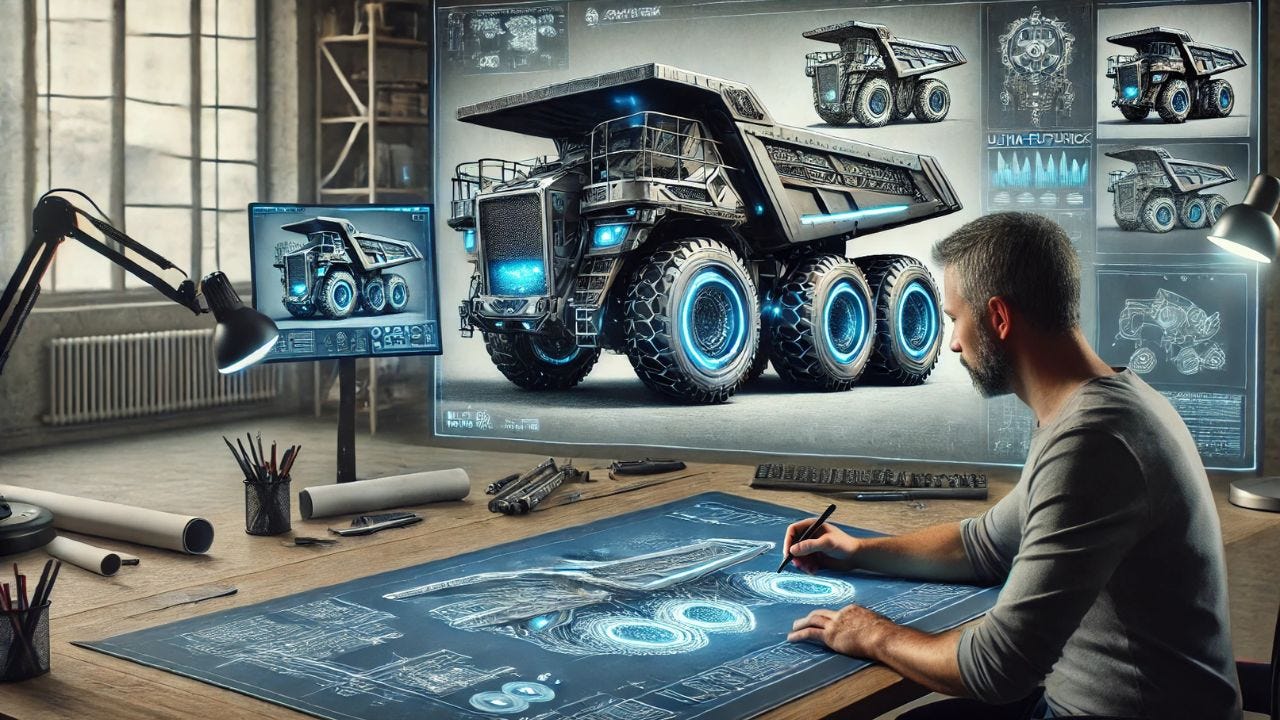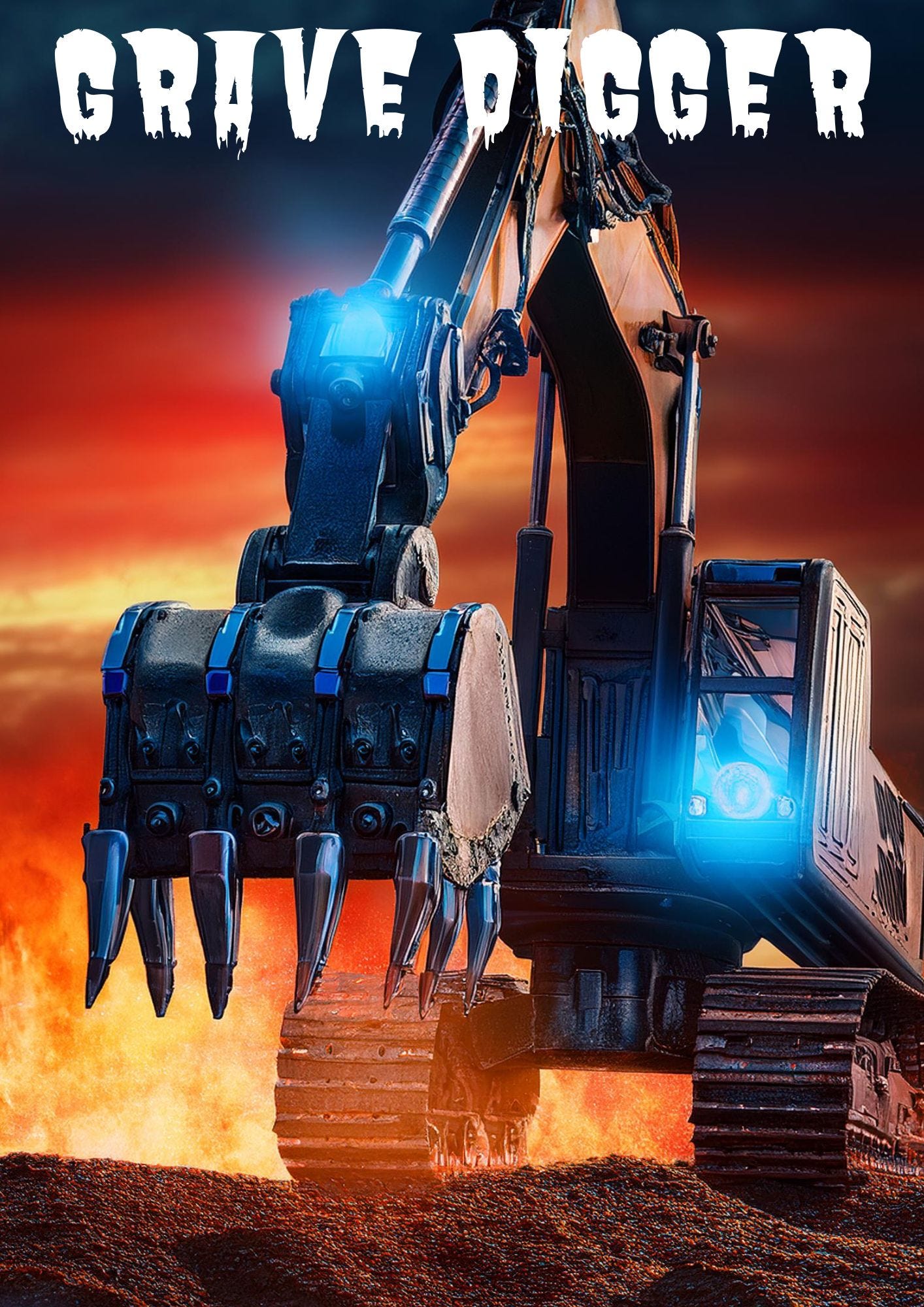Beyond engines and operators
Revolutionising Demolition: Is this the future of electrified and autonomous equipment?
The demolition and construction equipment industry is on the verge of receiving a rare and almost unique gift – The ability to start over.
The equipment the industry relies upon today is the result of an evolution. But what comes next could mark a revolution. A new perspective and an entirely new platform.
Until now, the design of excavators, dozers, dumptrucks, backhoe loaders, wheel loaders and telescopic handlers has always started the same way. Where do we put the operator and where do we put the diesel engine.
Once you’d figured that out, you could then move to stage two – Where do we put the fuel tank, transmission and the hydraulic system. Then – and only then – you could start to concern yourself with the actual work the machine was designed to do, whether that was digging, lifting, hauling or loading.
In short, the machines of today are a compromise. They are what is left on the drawing board once you have figured out how to move a man and an entire driveline.
But what if these were no longer a consideration? What if we could take the man, the engine, the fuel tank, the hydraulic pump and the thousands of metres of hydraulic hoses out of the equation. What would our machines look like then.
Well, if the industry truly grasps the opportunities presented to it by the adoption of electrification and autonomous operation, we could be about to find out. Take the hydraulic excavator, as an example.
The presence of the increasingly luxurious and spacious cabs of today means that the bit of the machine that does the actual work – the boom, dipper and bucket – is set off to one side. Its position and geometry is further dictated by the location of the engine, the hydraulic pump, the cooling pack and a variety of other major components that are always located to the rear of the machine.
So, what if the machine required no driver on board. Could we change the geometry of the excavator’s digging equipment? Would we? And if electrification removed all the engine and transmission gubbins, would machines still look like they have a hump on their back. Or would designers and manufacturers seize the opportunity to make them more sleek.
Think about that same notion, but applied to a mining truck. Without a massive diesel engine and without an operator, the entire profile of the machine could change. It could be lower and yet carry more, simultaneously improving its carrying capacity and its centre of gravity.
Think about the machines of today that have such a nasty habit of tipping over – Telehandlers and site dumpers. Take man out of the equation, and such incidents instantly become less of a concern. But more than that. Electrification and autonomy would allow their very configuration to be reimagined, with optimum stability replacing the desire for optimum comfort.
Just think for a moment of all the “stuff” that humans require in order to do a day of work on a piece of construction equipment. A cab, a seat, a seatbelt, pedals, steering wheel or joysticks, glass in the windshield, Bluetooth for their smartphone, an in-cab display to monitor the machine’s performance and position, somewhere to put their flask or their coffee cup.
Take all that away and we could be left with a smooth, seamless interface for a machine to talk to another machine—a conversation of code, not hands-on control. Machines would look sleeker, more compact, and they would certainly be more efficient, without all the bulk of accommodating a human operator.
And it’s not just the cab. Decades ago, the sound of a roaring diesel engine signified power, strength, and progress. The machines themselves were designed to accommodate a huge engine and a massive fuel tank to keep it running for hours on end.
Picture a machine with no engine, no fuel tank, no hydraulics. If they’re running on batteries in the future, maybe those batteries could be distributed throughout the length and width of the machine. Maybe they are incorporated into the machine structure itself. As a result, the very appearance of machine might alter beyond all recognition. Maybe those big square dumptrucks might be sleeker. They would certainly be quieter.
And while some of us might miss the plumes of black smoke that signified diesel power, maybe sites would smell just a bit better and maybe fresh air might taste better without diesel fumes in it.
Sadly, my own personal feeling on this is that we will not embrace this opportunity for revolution. Tesla came from nowhere just a few years ago and is now the most valuable car maker in the world. Elon Musk and his team swept in with high-tech, electric cars for the masses, surpassing long-standing giants, such as Toyota, BMW and Mercedes.
But for all that, and with the notable exception of the ugly Cybertruck, the Tesla looks like every other car on the road. It may have changed what lies under the bonnet. It might have hinted at an autonomous future with its self-driving mode. But a Tesla car remains just that – A car.
Of course, a car’s primary purpose is to move people while an excavator or truck is designed to move material. The people just hitch a ride.
But will any of today’s equipment manufacturers be bold enough to simply disregard all that has gone before and usher in a new era of engine-less, human-less machines that are truly built for tomorrow? Maybe. Maybe not.
But here’s a thought. Elon Musk and Tesla came out of left-field and, in just a few short years, took a major slice of the automotive pie. Could the same thing happen in the field of construction equipment?
Halloween will soon be upon us. There will soon be carved pumpkins in the window and trick or treaters on the doorstep.
And we are getting into the spooky spirit with the launch of a brand-new, Halloween-themed e-book from DemolitionNews editor and founder, Mark Anthony.
The new book is called Grave Digger, and it features a futuristic excavator gone rogue:
“It is the future of heavy machinery; a fully-electric, AI-powered excavator that boasts unparalleled precision and efficiency while working in perfect harmony with its operator. But be warned: the machine is fiercely protective. Don't underestimate the power of The Grave Digger."
The e-book book will be available ONLY until Halloween 2024.
In addition, anyone ordering a copy of the book between now and 28 October 2024 will receive a second and final copy with their name among the book’s dedications.
So, if you like the idea of a spooky excavator tale or if you’d just like to see your name in print, CLICK HERE to buy your copy of Grave Digger.






